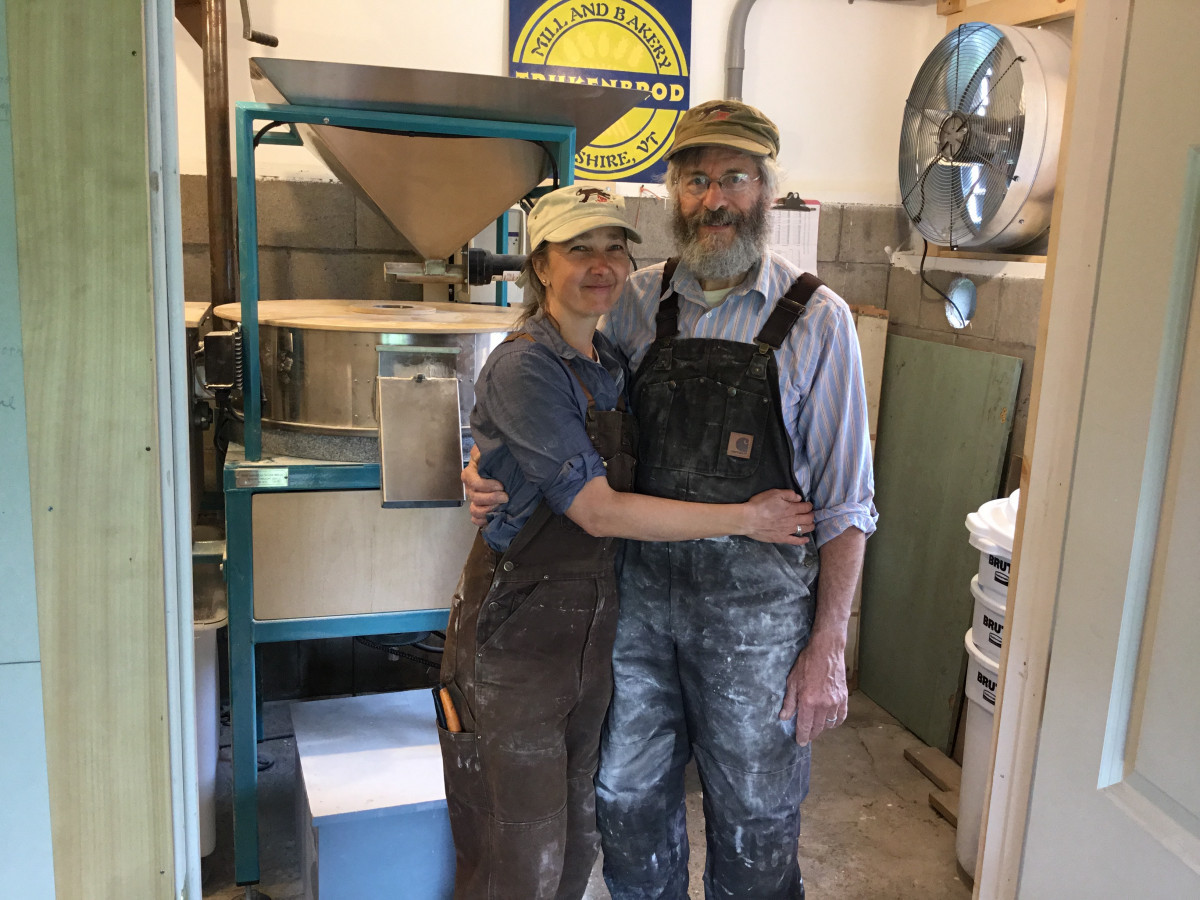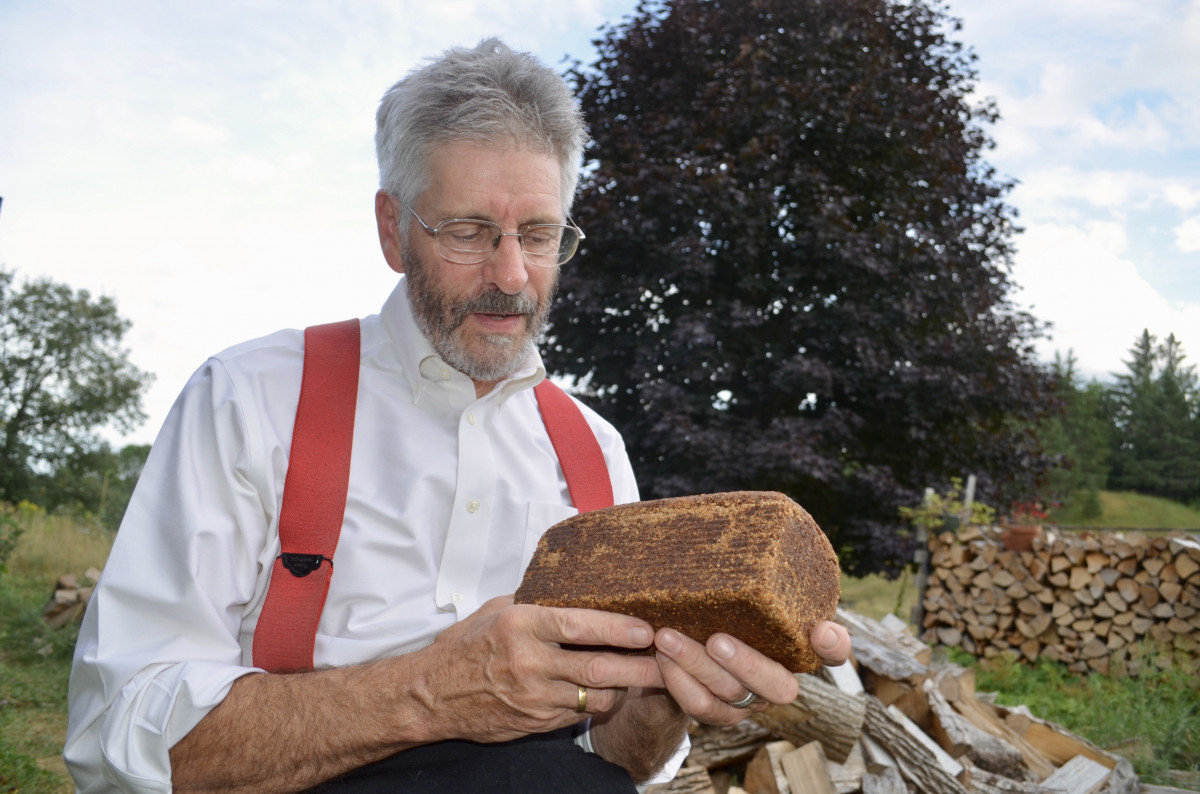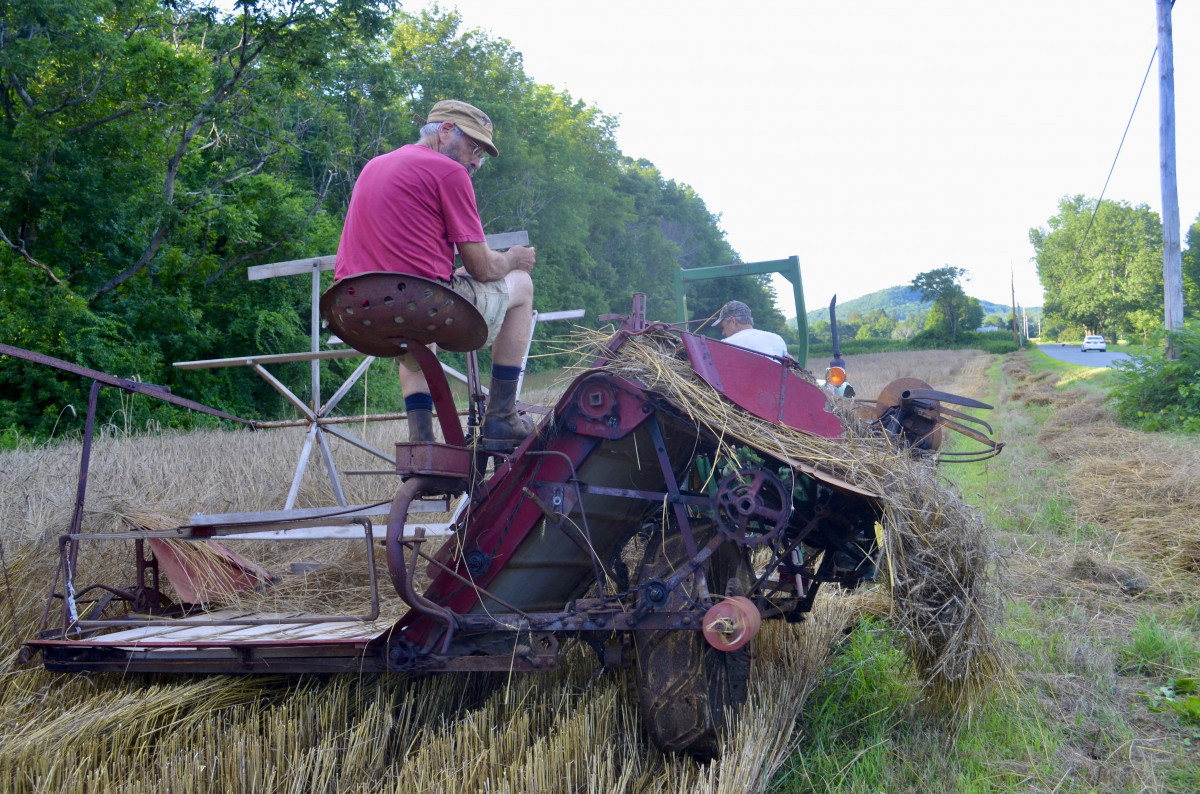Bread like your Great-Great-Great Grandmother Made

If you’ve been a customer with us for a while you may recognize these familiar faces. John and Zsuzsa are the team behind Trukenbrod Mill and Bakery. Their whole grain breads have a cult following and for good reason. They bake bread the old-fashioned way.
It is estimated that humans began baking bread around 30,000 years ago and since then, bread in all its many forms has become the most consumed food in the world. It has also undergone a massive transformation, especially in the last 200 years. Traditionally, bread was made from stone ground flour and relied on wild yeast and bacteria to be leavened. In the 1860s French scientists discovered how to isolate yeast for use in baking. This discovery was promptly followed by the invention of the steel roller mill.
For the first time the wheat berry could be separated from the germ (the plant embryo) and the bran (the outer layer) and true white flour was born. This, paired with baker’s yeast, sped up the process of baking - but at a cost. Stone ground flour is coarsely ground and contains all parts of the wheat berry including the vitamins, proteins, and fiber that are found in the germ and bran. Coupled with the longer fermentation with sourdough culture, the wheat becomes more digestible and nutritionally available. (For the science behind this process see this article by John.)
Even the whole wheat you find in the grocery store is not as nutritious as stone ground wheat. It is actually a recombination of milled parts at the approximate ratio for whole wheat but lacking the germ. Since the germ contains oils that can go rancid it is left out to allow for a longer shelf life.
The way we process wheat and bake is not the only thing that has changed. Since the 1950s and the advent of the ‘Green Revolution’ wheat has been bred to produce higher yields, be resistant to disease, and resistant to herbicides. Before harvest farmers often spray their fields with Round-Up or Glyphosate to kill the plants and start the drying process so they can harvest earlier. This herbicide then ends up in the wheat products found on grocery store shelves.

In order to avoid the problems associated with modern wheat, John and Szusza source organic grains directly from farmers. Their wheat is from New York, and their organic corn and rye is from Vermont. They also grind the flour themselves on a New American Stone mill, made locally with mill stones of Barre granite by Andrew Heyn of Elmore Mountain Bread. Their sourdough breads are leavened without the use of yeast and they are famous for their European style rye breads.
For them bread making is a labor of love. A long standing friend of Cedar Circle Farm, this summer they grew Banatka wheat on our plot down the road. This is a Hungarian landrace from the 19th century that is grown in the Banatka region in central eastern Europe. Below is a picture from harvest day with John sitting on his 1942 McCormick model reaper-binder while Nic drives the tractor.
The wheat is currently drying in stacks which are an old design that does not allow water to penetrate. When the heads have finished drying they will be threshed (the process of removing the grain from the plant) and then the milling and baking can begin. If you are curious to taste bread like it’s meant to be, Trukenbrod delivers bread and flour to Cedar Circle Farm every Tuesday.
All pictures were taken by John and Zsuzsa. You can find them on Instagram at @trukenbrodteam.








